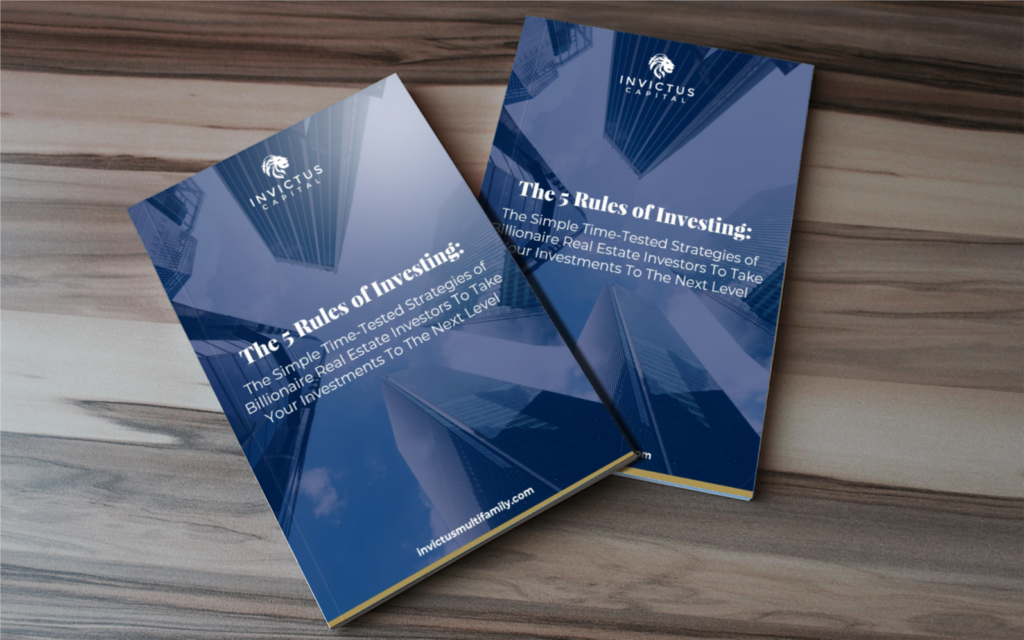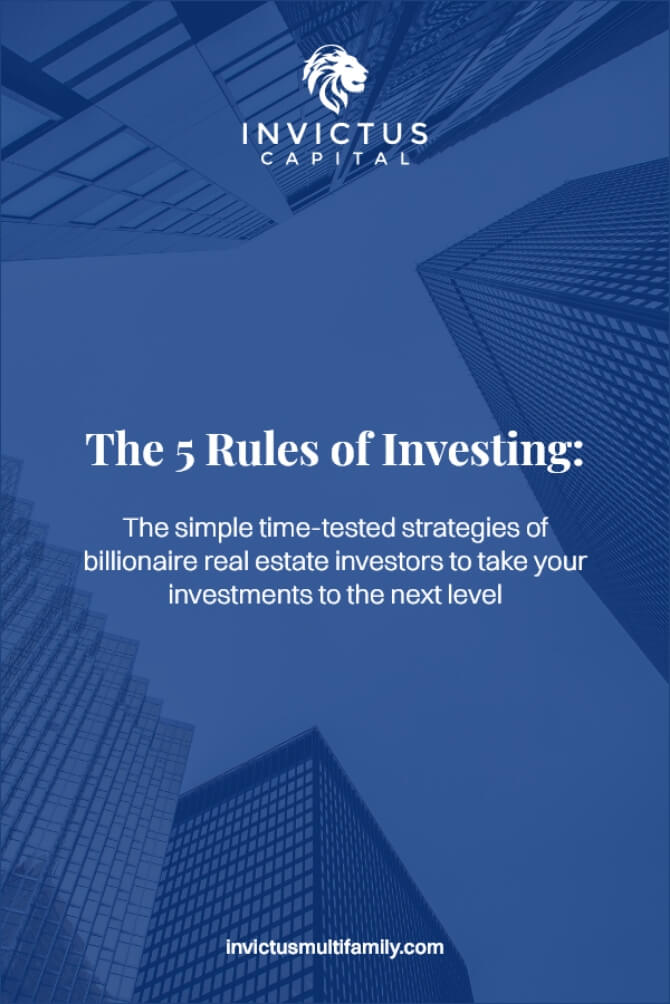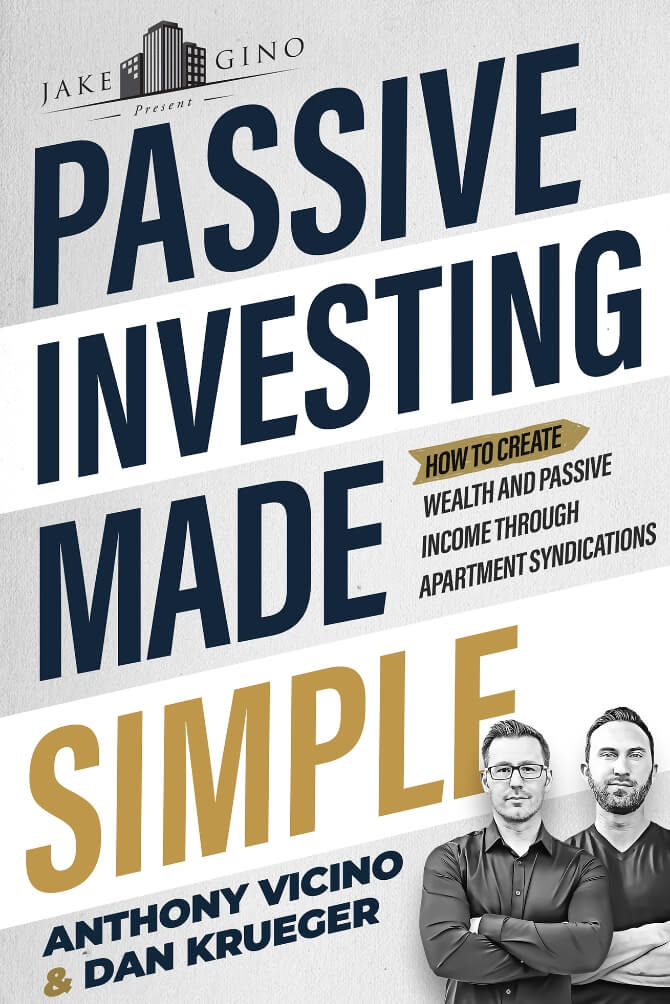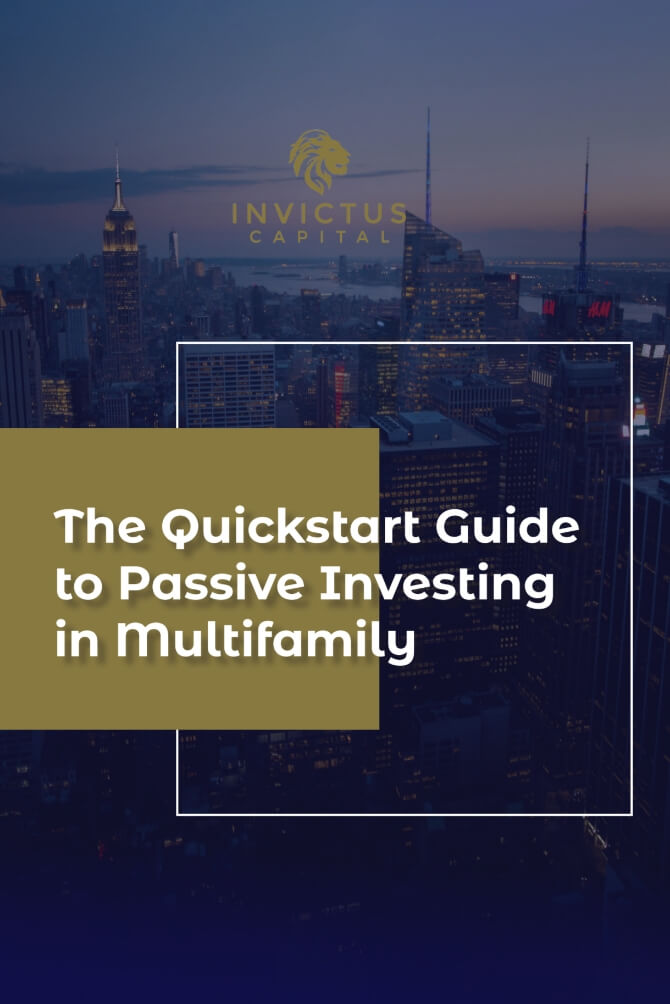The Internal Rate of Return is the gold standard by which we evaluate deals because it allows you to compare apples to oranges.
Then again, it’s also one of the most confusing metrics to calculate and understand.
Fear not, intrepid investor, we’re here to simplify the Internal Rate of Return in Under 10 minutes!
You ready?
Great.
Then let’s start the timer!
Tweetable Quotes:
“The IRR is the gold standard by which we evaluate deals because it allows you to compare apples to oranges.” – Anthony Vicino
“The IRR assumes in its formulation that you are taking that money and reinvesting it at a reasonable rate.” – Anthony Vicino
LEAVE A REVIEW if you liked this episode!!
Keep up with the podcast! Follow us on Apple, Stitcher, Google, and other podcast streaming platforms.
To learn more, visit us at: https://invictusmultifamily.com
**Want to learn more about investing with us?**
We’d love to learn more about you and your investment goals. Please fill out this form and let’s schedule a call: https://invictusmultifamily.com contact/
**Let’s Connect On Social Media!**
LinkedIn: https://www.linkedin.com/company/11681388/admin/
Facebook: https://www.facebook.com/invictuscapitalventures/
YouTube: https://bit.ly/2Lc0ctX

Anthony Vicino (00:15):
Welcome to multifamily investing made simple in under 10 minutes, I am your host. Anthony Vicino Vicino joined as always by my partner, Dan Krueger Krueger. And today we’re going to be simplifying the always confusing internal rate of return. The IRR, Dan Krueger, what is the IRR? And why should I care about it?
Dan Krueger (00:34):
It’s an excellent question, Anthony Vicino. I’m glad you asked because I just happen to have a beautiful, a beautifully simple example, whipped up, ready to go to illustrate this concept in action. So internal rate return.
Anthony Vicino (00:48):
Wow, you came prepared to this totally random conversation we didn’t prepare for at all.
Dan Krueger (00:53):
I’m amazed. I was not prepared at all. I just carry this around in my pocket. So what is IRR? What is internal rate of return? It’s a metric that measures return. If you can’t tell from the name, however, the nuance here that separates it from the pack of other return metrics is that it takes into account the time value of money. Meaning a dollar received today is worth more than a dollar receive tomorrow? So really to extrapolate this point a little bit further, we could look at two examples. Two example deals. Side-By-Side two very different deals. One a development deal in which you’re putting money to work on time zero, and you don’t get any returns until year five because it takes a while to build the building and lease it up and actually start generating cash flow. The alternative deal would be a deal that is an operating asset.
Dan Krueger (01:36):
Now that you’re going to buy, add value to do a cash out refi, let’s say in year two, and then continue to hold it until year five when you sell. So you’re getting cash flow from the operations, then you’re getting cash from the refinance of year two, and you’re getting your playout at the end when you exit. So if we put those two deals side by side, and the important part is you make the exact same number of dollars in both deals. The only differences one of the deals is going to pay out slowly over time and the other deal, you don’t get anything to the way yet. So we’re going to throw it up on the screen to illustrate it, but there is a pretty noticeable difference in the IRR on these two deals. Even though if you look at them, you’re making the same number of dollars within the same period of time. So I’m going to share my screen real quick here so everybody can see this beautiful example.
Anthony Vicino (02:23):
So if you guys are listening while you’re driving, you’re on the podcast, pure audio format, you don’t have any sense for what you should be seeing here. I will describe it. Dan Krueger has pulled up a beautiful spreadsheet. It looks like he spent days fine tuning this and it is glorious. We’ve got a dark grey band that says IRR and then years, zero year one year, two year three, all the way up to year five. And then, then we have two deals modelled here. And the one deal we have the development deal, which is you don’t get any cash until year five. But in your fat five, you’re going to get $200,000 in return for your hundred thousand dollars investment. So you have doubled your money in five years. Yay. Really good and deal. Number two, as Dan Krueger explained, it’s a little bit more complex.
Anthony Vicino (03:08):
It’s more akin to what we do with value, add multifamily deals. So every year you’re going to be getting an 8% cash on cash return. So for a year one, two, three, and four and five, you’re getting $8,000 in distributions. And your two, after we’ve added the value to the property, we’re going to do a cash out refinance. And we’re going to return, let’s say 60% of your equity that you invested. So you invested a hundred thousand dollars. So now we’re giving you back in year two, a check for $60,000, and then in year five, we’re going to sell the property. And in that point, we’re going to give, you know, whatever the proceeds are from that. So in this case, it’s $108,000. So that at the end of five years in this value ideal, you have also earned the same amount that you would have in the development deal.
Anthony Vicino (03:53):
That’s 200,000, you’ve doubled your money. Now the IRR is vastly different in the development deal, where you’re getting all the money at the end, it’s a 15% IRR, which is strong. That’s a great return, but in the value add deal where you’re getting the cash flows, you’re getting the cash out refinance. Your IRR is actually 22%. So 7% better just because of when you’re receiving the funds. And that’s the really important thing to understand what the IRR is. It takes into account the time adjusted value of money. As Dan Krueger pointed out money today, a dollar in pocket today is worth more than a dollar next year. There’s a couple of reasons for that one inflation, the inflation just keeps going up and up the cost of living the value of the dollar goes down, utility, a dollar in the hand, right now you can go out and buy something with it, whereas a theoretical dollar, you can’t buy anything with that. And then the most important aspect when it comes to the IRR is it assumes when we get that dollar back today, we can start investing it and that dollar can start earning its own dollars. And that’s the real beauty of the value add multi-family types of deals that we do because we’re getting a big chunk of our money back throughout the deal. We can keep reinvesting it and getting that flywheel really flat.
Dan Krueger (05:04):
Yeah. It’s a really powerful concept. And I think it’s tough to imagine, you know, exactly how big of a difference it makes being able to extract some of your equity prior to sale to go out and do other deals. That’s how you can really increase the rate of progress, whether you’re investing passively or actively, the sooner you get to reload and redeploy capital the better. So it’s a really powerful little metric
Anthony Vicino (05:30):
And, and IRR is the gold standard by which we evaluate deals because it allows you to compare apples to oranges because it’s just saying, Hey, what is my total time value of money returns here? And it could be, I’m looking at a stock. It could be, I’ve invested in some alpacas. I have a multi-family deal over here. I can compare them and say, this one’s a 17%. This one’s 13%. And it crosses those boundaries and it makes sense to compare. Whereas some of the other metrics like cash on cash, or just equity multiple, that doesn’t really help. Does it paint a picture? The IRR really gives you the best snapshot of what that deal really stands to return. Sometimes you’ll hear people talk about the annualized rate of return and you’ll see really gigantic numbers, and those can be all great and everything, but that wouldn’t paint you the picture like you would end up with the same AAR for these two deals, whereas the IRR is vastly different. So it’s a pretty complicated metric. It’s maybe the most complicated. It’s not a number that you can just calculate in the back of your head. You need to use a spreadsheet like Excel or Google sheets and use their formula to calculate this. But that is the internal rate of return.
Dan Krueger (06:39):
I think it’s really important to talk about this because a lot of people think that it’s just the average return over the whole period, which is not the case, not the case. The average return does not factor in the time value of money. That’s the big difference. So
Anthony Vicino (06:52):
Money today, super valuable, get it your pocket. And that way you can put it back to work, don’t just go spend it. That’d be silly, right? Like the IRR assumes in its formulation that you are taking that money and reinvesting it at a reasonable rate at a discounted rate, whatever we decide that is right. It’s not saying, hey, you’re getting your money back and you just go and put into it. Lamborghini. Don’t do that. I mean, unless you’re going to let me drive it. So,
Dan Krueger (07:16):
Or maybe you’re going to do like a rental thing. You’re going to buy the Lambo rented out by the day.
Anthony Vicino (07:21):
Hey, we might have a new business model here.
Dan Krueger (07:23):
Yeah. I’ve got a couple of landlords. We’ve lived out
Anthony Vicino (07:25):
Stick with me. It’s like multi-family. But for Lambo,
Dan Krueger (07:28):
The only problem is these assets to appreciate immediately. So yeah,
Anthony Vicino (07:32):
It’s hard to add value to a Lamborghini too. Like you can put a new spoiler on there and maybe some racing stripes to make it go faster, but not much you can really do to drive that in a lie. So that’s going to do it for us
Dan Krueger (07:42):
This week. We are way off topic.
Anthony Vicino (07:45):
We’d say guys, but we are still under 10 minutes. So that’s going to do it for us. With multifamily investing made simple in under 10 minutes before you leave, do us a favour because it got an extra couple of minutes. Just, you don’t know what to do with yourself. Go over to Spotify, go to iTunes, go wherever you’re listening to this and do us a huge favour, drop us a review. It helps the algorithms help spread the word and it gives us feedback. It lets us know how we’re doing. If you have critical feedback, we’ll take that. But preferably you drop a five star because look how pretty look up pretty we are when we deserve five stars. Okay. That’s it. That’s it for me, begging on my knees for the reviews. Please do it now. And we’ll catch you next week, guys.


